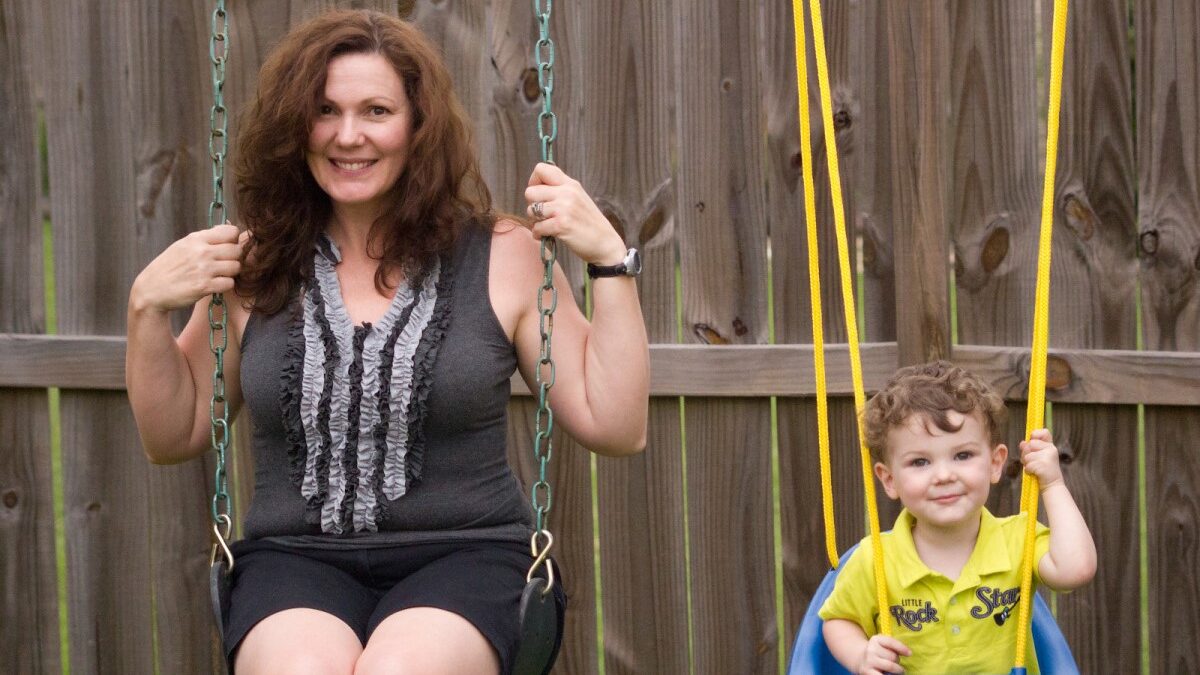About a year and a half ago, I noticed that my son — let’s call him Andy — was putting rainbow stickers on his phone. And a friend alerted me that Andy rebuked her daughter in a group chat for being “so cisgender.” I did some delicate digging, and it became clear: My child, then 13, was flirting with going “trans.”
He’s not alone. The number of transgender-identifying kids is up 20 to 40 times since a decade ago, to 1.5 percent of all teens. And the gender facilities that say they are the experts have been unmasked. Videos and statements have revealed that doctors in these so-called clinics are willing to give 15-year-old girls double mastectomies and call it treatment.
I wasn’t about to send my son off for experimental medical interventions that didn’t treat any underlying psychological issues. In this, I think I’m representative of the silent (and bullied) majority. Still, what could I do?
The first thing I had to do was to realize that the gender cult is powerful, and I can’t control the choices and feelings of my kid. I had to accept my limits, but that didn’t mean I was helpless. Parents are still the most important influence on their kids.
Finding a New School
I was lucky: My son was at a private school that did not push kids, behind their parents’ backs, into exploring alternate sexualities and getting “treated” by lifetime medicalization. If my son had been at a trans-affirming school — which means just about any public school — I would have been undermined at every turn.
At this school, however, he did have a cohort of “rebel” friends who all seemed to identify themselves as gender-questioning. And the school itself was not academically challenging enough for Andy. So I focused on academics, and we looked for a new school that would be a better fit on that score — and still supportive of my values. Finding one gave him a fresh start and a new peer group.
Building Real Identity
Next, I decided I would not provoke Andy by debating gender and trans issues. Maria Keffler in her book “Desist, Detrans, and Detox” reminds parents that transgenderism in adolescents is less about sex and more about identity, identity, and identity. A few decades ago, Andy probably would have worked through his teenage crises by going goth or arguing with me about religion. These days, becoming one of the letters in LGTB is the shortcut to being interesting, not “basic.”
Well, I didn’t want to make gender-bending the way he was going to differentiate himself from his parents. If he had been openly claiming a different so-called gender identity, maybe I would have been more confrontational about it. But since he was just flirting with being trans, not yet eloping, I decided not to make the topic of the sexes even more important than it already was. Instead, I focused on helping him build an identity in a healthy way.
I made it a priority to compliment him, every day, praising him for all the good things he is. Every time I “caught him” being funny, smart, helpful, generous, thoughtful, or kind, I noted it out loud. Every day, multiple times a day. I tried to help him see that these things are more important to his identity than some exotic “gender.” I also tried to help him feel more at home in his skin. He was given lessons in a sport he enjoys, so he could experience his body being strong and agile. Whatever reduced his alienation from his body, I encouraged.
Open-Ended Questioning
Next, I focused on building our relationship. I asked a lot of open-ended questions, and I made goofy jokes. We laughed a lot. I learned about him and signaled that I was interested in learning more. De-escalating tension and increasing the joy between us was key.
If Andy wanted to wear a vintage shirt that looked like it belonged on a French aristocrat from a few centuries ago, I just shrugged and let it pass. As long as what he chose was somewhere within the boundaries of socially acceptable male clothing, I didn’t make a fuss. After all, being a man (or a woman) is large enough to encompass differences in style, personality, and interest. It’s the trans movement that stereotypes the sexes, telling us that a sensitive, artistic boy must actually be a girl. Nonsense! My son could be a man and wear pastels.
When opportunities arose in everyday life, I pointed out the differences between men and women. In talking about school athletics, I would casually observe, “Oh, in high school, the athletic teams are divided by sex, because by puberty, boys develop more muscles and have more lung capacity than girls.” I never made these into arguments, just objective remarks.
In fact, we didn’t talk about so-called gender much, although I was prepared to. I coached myself on how to respond with neutrality and interest. I was determined only to ask questions. “I’m not clear how, if gender is socially constructed, that it is also an infallible identity deep inside the person?” “Help me understand. If gender is fluid and changeable, why should people get surgeries to alter their bodies permanently?” Books and essays pointing out transgenderism’s inconsistencies helped me clarify my thoughts. Still, I vowed I would only provide my own answers when Andy asked me a question — only, that is, when he was truly curious about my thinking.
I did take Andy to one talk on gender by a speaker who was calm and sympathetic but still supportive of my values. When he asked why he had to go, I simply said, “It’s an important topic, and this point of view is not well-represented in the culture.” Afterward, when I asked him what he thought, he said, “It was fine,” in a tone of voice that indicated the opposite. I dropped it; the talk still gave him a lot to chew on, even if he didn’t want to admit it.
Limiting Technology
One other piece was key: technology. Much trans proselytizing happens online, with anonymous adults love-bombing vulnerable kids. These adults sell the idea that acceptance can be found only in their new trans family and not in their real home. Some parents need to take drastic steps regarding their kids’ online presence. Fortunately, the screen problem was one I had been addressing for a long time, so I could be more moderate.
Andy did not have a smartphone, although even flip phones these days have internet browsers. I gave him a new phone designed for kids, one that had some carefully curated apps but no internet browser. For computer time, he was limited to an hour a day, and I trusted the internet filters I managed on his computer to keep him off the porn sites and the sexually explicit forums that cater to trans-questioning kids. All that limited (but didn’t eliminate) his exposure to pro-trans pressure. As a bonus, I got a much more cheerful kid at home who wasn’t always in front of a screen.
The point of all of this was threefold: to be the good guy, to distract him from all gender talk all the time, and to provide other identity options than the trans one.
Upping My Parenting
Lastly, I played the long game. Even when I didn’t believe it, I kept repeating to myself that the universe wouldn’t give me a kid that I couldn’t care for. That I had his best interests at heart — and online trans gurus didn’t — and I could wait this out with patience. I prioritized him when we had downtime in the evenings, not my phone. And I did the things I needed to, like sleeping enough and getting my own support system, so I could be available to him. Should I have been doing all of this all along as a parent? Well, of course, and in fact, it’s not like I had to do a total 180 when this emergency happened. Some of these things I was already doing, sort of. But I still needed to level up my parenting.
This summer, when he decorated a new phone, there were no rainbow stickers on it.
I wouldn’t say we are out of the woods, but he seems uninterested in the whole gender question. His wardrobe choices are less outrageous, and he’s not anxious, angry, and approval-seeking. Instead, he’s engaged and happy at school and at home, and he doesn’t need to be “different” according to the trans script. He’s happier being different just as himself. That makes me one happy parent.









